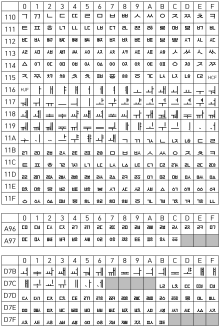This article may be too technical for most readers to understand.(July 2022) |


The writing system of the Korean language is a syllabic alphabet of character parts (jamo) organized into character blocks (geulja) representing syllables. The character parts cannot be written from left to right on the computer, as in many Western languages. Every possible syllable in Korean would have to be rendered as syllable blocks by a font, or each character part would have to be encoded separately. Unicode has both options; the character parts ㅎ (h) and ㅏ (a), and the combined syllable 하 (ha), are encoded.





